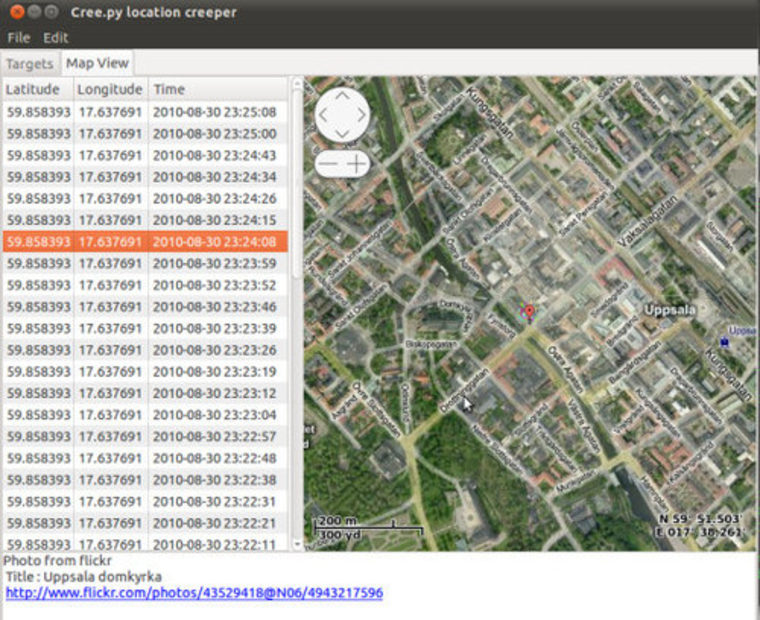Could a stranger on the Internet track your every move? Yes — certainly and easily — thanks to the photos you post online and an app named Creepy.
Switched reports that a free software package called Creepy is currently available for Windows and Linux users that would allow those folks "to pinpoint anyone's location, using geographic data embedded within shared photos."
How does the process work? It's practically child's play once someone has installed the app:
All you have to do is type in a person's Twitter or Flickr username, and hit the 'Geolocate Target' button. The app will then gather all the geographic information available online, via photos that the 'target' has shared online.
The reason app can gather this information so easily is that whenever "someone shares a photo taken with his or her smartphone, services like Flickr, Yfrog and Twitpic automatically record the location where the shot was taken, and store that geo-tag in the image's EXIF data." Creepy pulls up that data and places it onto maps.
Of course all the hubbub around Creepy isn't the first time we've seen how easily uploaded photos can reveal more information than expected. Adam Savage of MythBusters fame once accidentally posted a geotagged photo of his car on Twitter and security experts panicked because "since the accompanying text was “Now it’s off to work,” potential thieves knew he would not be at home."
And then there was also a website called 'I Can Stalk You' which demonstrated how geotagged photos — if combined with details gleaned from tweets — can reveal information which could easily be abused by someone with nefarious intents:
- Where you live
- Who else lives there
- Your commuting patterns
- Where you go for lunch each day
- Who you go to lunch with
- Why you and your attractive co-worker really like to visit a certain nice restaurant on a regular basis
And that's what Creepy is all about according to Yiannis Kakavas, the app's creator. It's about demonstrating what geotagged images can reveal and reminding people that they need to be aware of those details — even though they don't exactly need to live in terror because apps like Creepy or websites like 'I Can Stalk You' exist:
I don't think that the fact that your geolocation information can be gathered and aggregated is disturbing. The fact that you were publishing it in the first place, is, on the other hand. Just to be clear, the intention behind creating Creepy was not to help stalkers or promote/endorse stalking. It was to show exactly how easy it is to aggregate geolocation information and make you think twice next time you opt-in for geolocation features in twitter, or hitting "allow" in the "this application wants to use your current location" dialog on your iPhone.
You might still be a little bit nervous about reading all this or seeing just how revealing an innocently uploaded photo can be, so you want to know: How do I protect myself?
It's simple. Check the settings of the apps or websites you use to upload photos. Make sure that you've turned off geotagging features. And if you want to be extra safe: Use an app to strip photos of geotags before uploading them by using a program such as Geotag Security.
Related stories:
- App enables expensive long-distance parenting
- New app automatically shares photos with everyone near you
- App turns your iPad into a guide to the royal wedding
Rosa Golijan writes about tech here and there. She's a bit obsessed with Twitter and loves to be liked on Facebook.
